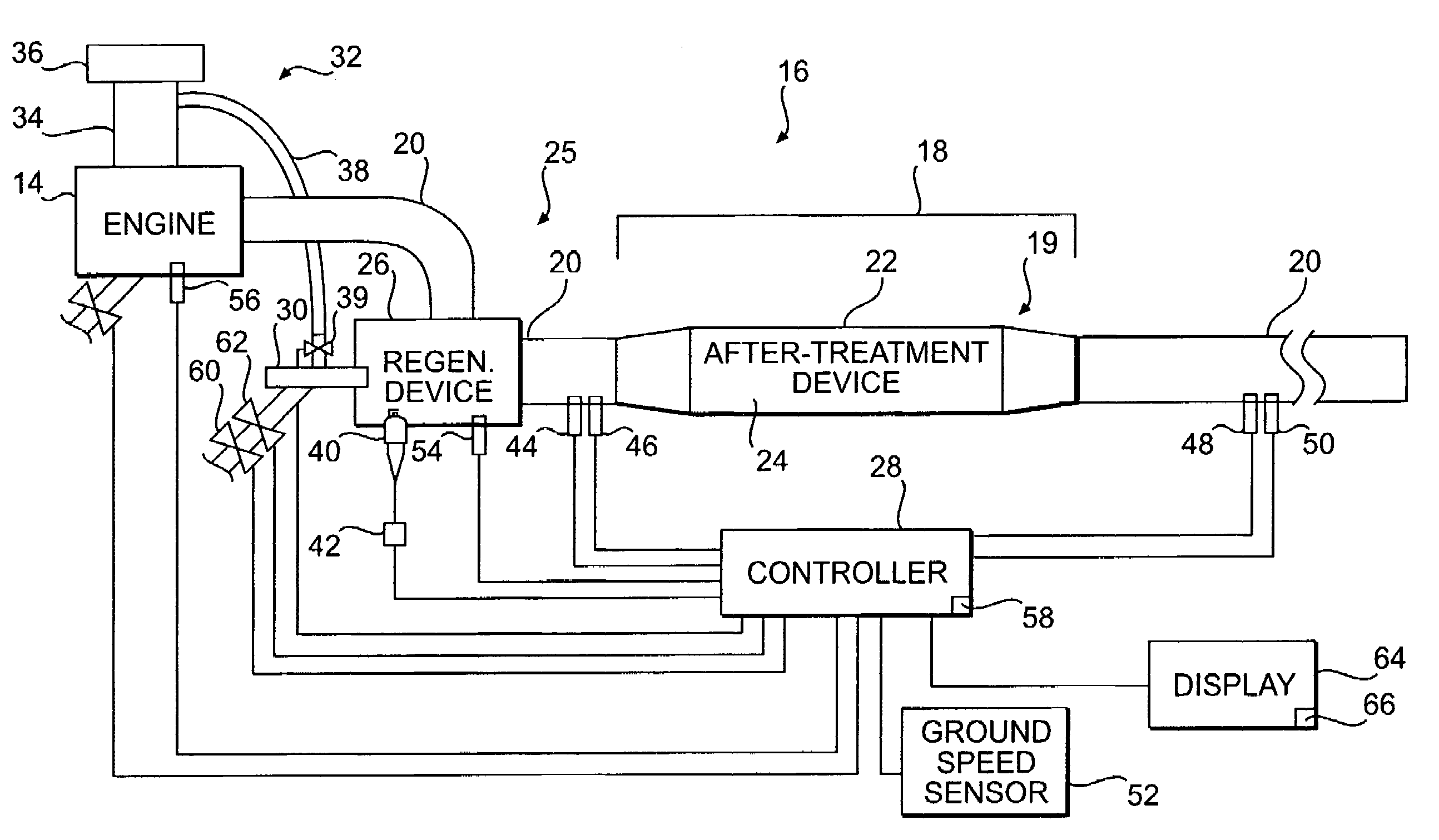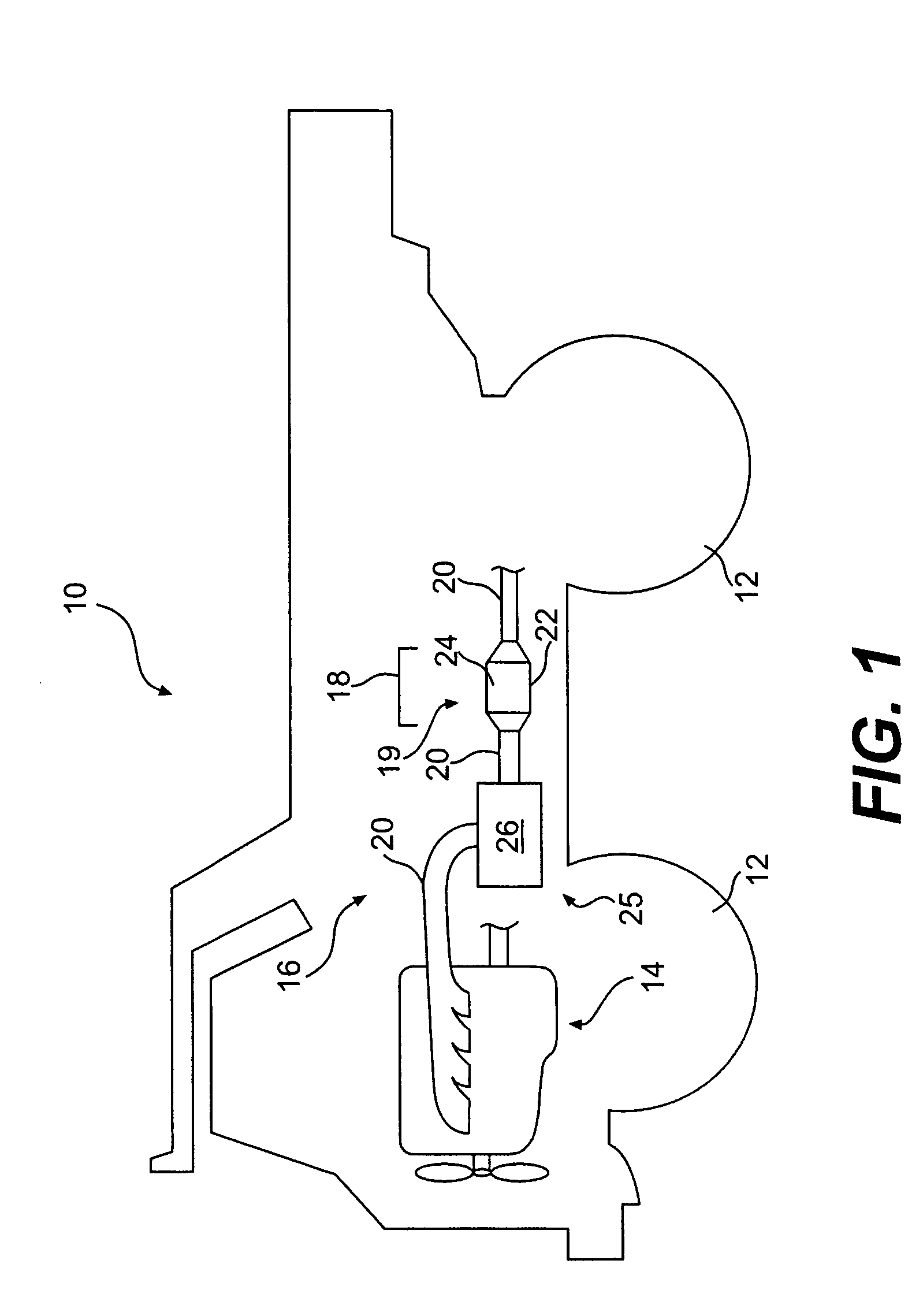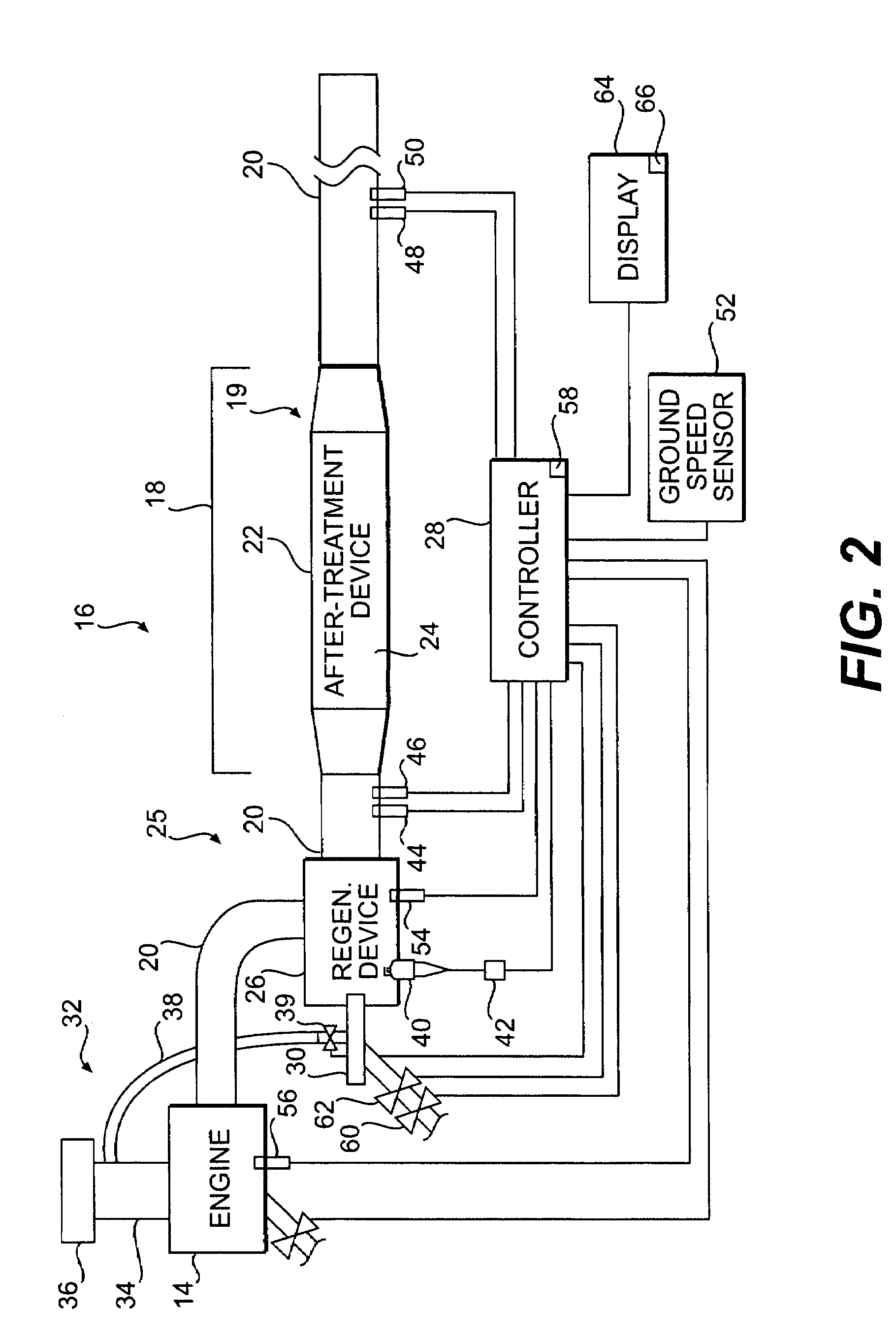Particulate trap regeneration system and control strategy
a technology of a regeneration system and a control strategy, applied in the direction of engines, mechanical equipment, machines/engines, etc., can solve the problems of not accounting for one or more additional factors, affecting the performance of the engine, damage to the filter, etc., and achieve the effect of reducing an amount of particulate matter
- Summary
- Abstract
- Description
- Claims
- Application Information
AI Technical Summary
Benefits of technology
Problems solved by technology
Method used
Image
Examples
Embodiment Construction
[0015]Reference will now be made in detail to the drawings. Wherever possible, the same reference numbers will be used throughout the drawings to refer to the same or like parts.
[0016]FIG. 1 illustrates a work machine 10. Work machine 10 may include an operator station 11, one or more traction devices 12, an engine 14, and a particulate trap regeneration system 16.
[0017]Although work machine 10 is shown as a truck, work machine 10 could be any type of machine having an exhaust producing engine. Accordingly, traction devices 12 may be any type of traction devices, such as, for example, wheels, as shown in FIG. 1, tracks, belts, or any combinations thereof.
[0018]Engine 14 may be any kind of engine that produces an exhaust flow of exhaust gases. For example, engine 14 may be an internal combustion engine, such as a gasoline engine, a diesel engine, a natural gas engine or any other exhaust gas producing engine.
[0019]System 16 may include an after-treatment device 18. After-treatment de...
PUM
 Login to View More
Login to View More Abstract
Description
Claims
Application Information
 Login to View More
Login to View More - R&D
- Intellectual Property
- Life Sciences
- Materials
- Tech Scout
- Unparalleled Data Quality
- Higher Quality Content
- 60% Fewer Hallucinations
Browse by: Latest US Patents, China's latest patents, Technical Efficacy Thesaurus, Application Domain, Technology Topic, Popular Technical Reports.
© 2025 PatSnap. All rights reserved.Legal|Privacy policy|Modern Slavery Act Transparency Statement|Sitemap|About US| Contact US: help@patsnap.com



